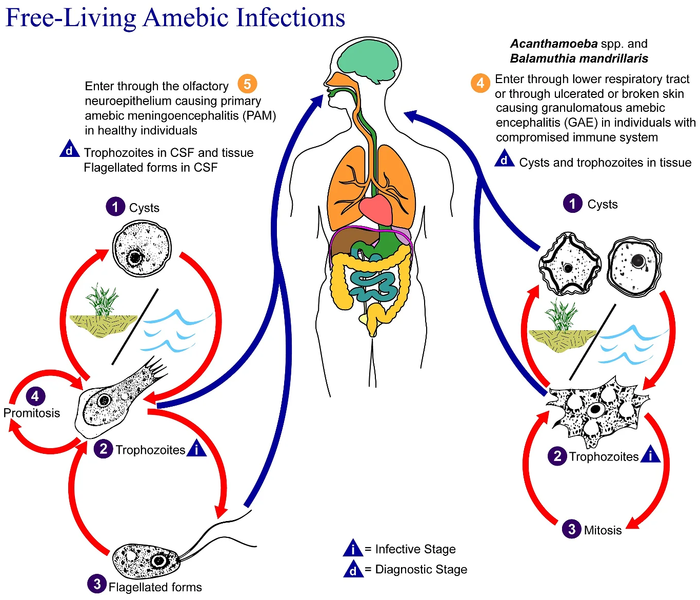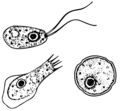Datoteka:Free-living amebic infections.png

Veličina ovog prikaza: 700 × 600 piksela. Ostale razlučivosti: 280 × 240 piksela | 560 × 480 piksela | 896 × 768 piksela | 1.195 × 1.024 piksela | 1.365 × 1.170 piksela.
Vidi sliku u punoj veličini (1.365 × 1.170 piksela, veličina datoteke: 715 KB, MIME tip: image/png)
Povijest datoteke
Kliknite na datum/vrijeme kako biste vidjeli datoteku kakva je tada bila.
| Datum/Vrijeme | Minijatura | Dimenzije | Suradnik | Komentar | |
|---|---|---|---|---|---|
| sadašnja | 11:24, 2. veljače 2023. |  | 1.365 × 1.170 (715 KB) | Materialscientist | https://answersingenesis.org/biology/microbiology/the-genesis-of-brain-eating-amoeba/ |
| 08:30, 20. srpnja 2008. |  | 518 × 435 (31 KB) | Optigan13 | {{Information |Description={{en|This is an illustration of the life cycle of the parasitic agents responsible for causing “free-living” amebic infections. For a complete description of the life cycle of these parasites, select the link below the image |
Uporaba datoteke
Na ovu sliku vode poveznice sa sljedećih stranica:
Globalna uporaba datoteke
Sljedeći wikiji rabe ovu datoteku:
- Uporaba na de.wikibooks.org
- Uporaba na en.wiktionary.org
- Uporaba na fi.wikipedia.org
- Uporaba na fr.wikipedia.org
- Uporaba na gl.wikipedia.org
- Uporaba na is.wikipedia.org
- Uporaba na it.wikipedia.org
- Uporaba na pl.wikipedia.org
- Uporaba na te.wikipedia.org
- Uporaba na vi.wikipedia.org
- Uporaba na www.wikidata.org
- Uporaba na zh.wikipedia.org




